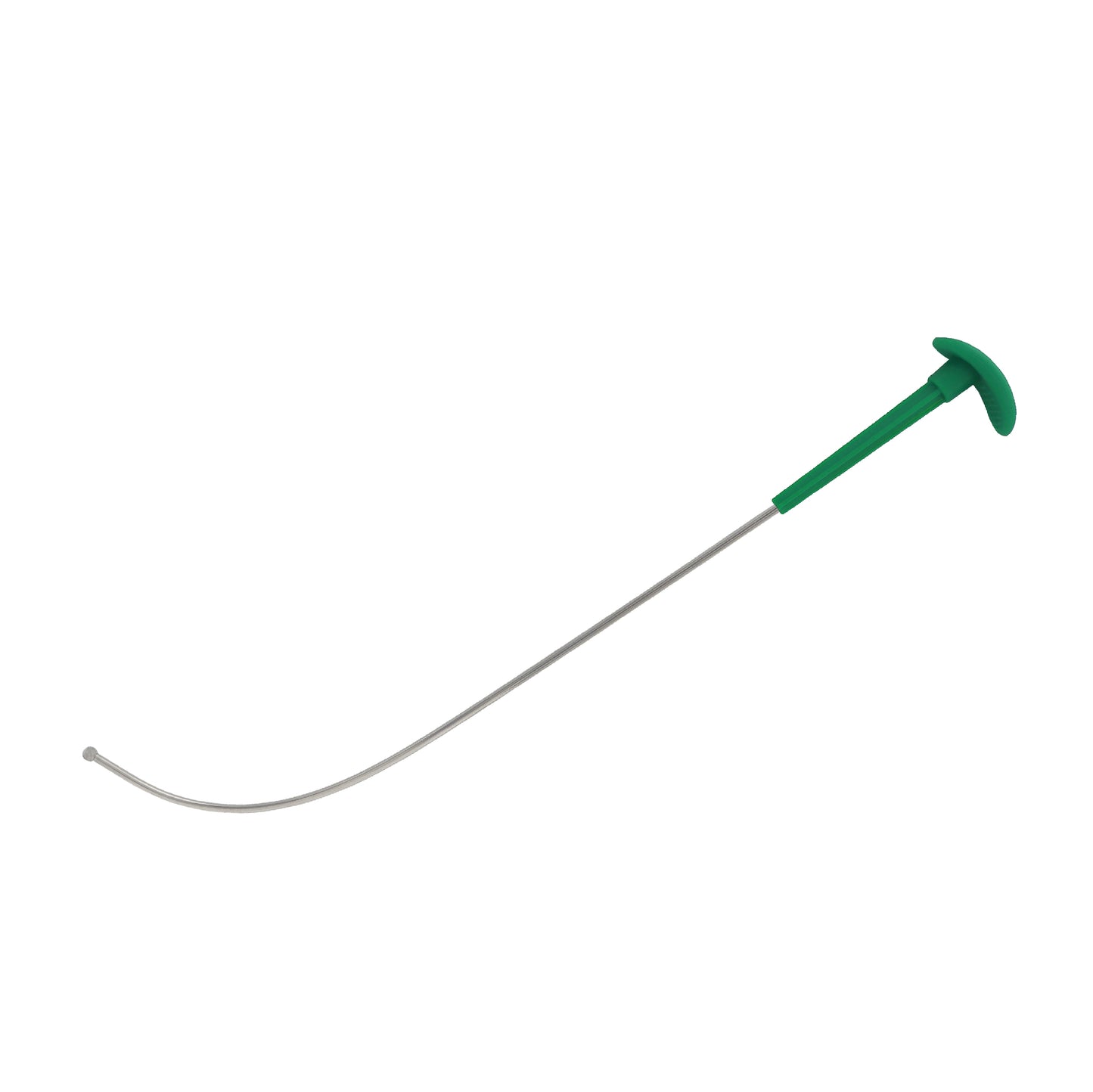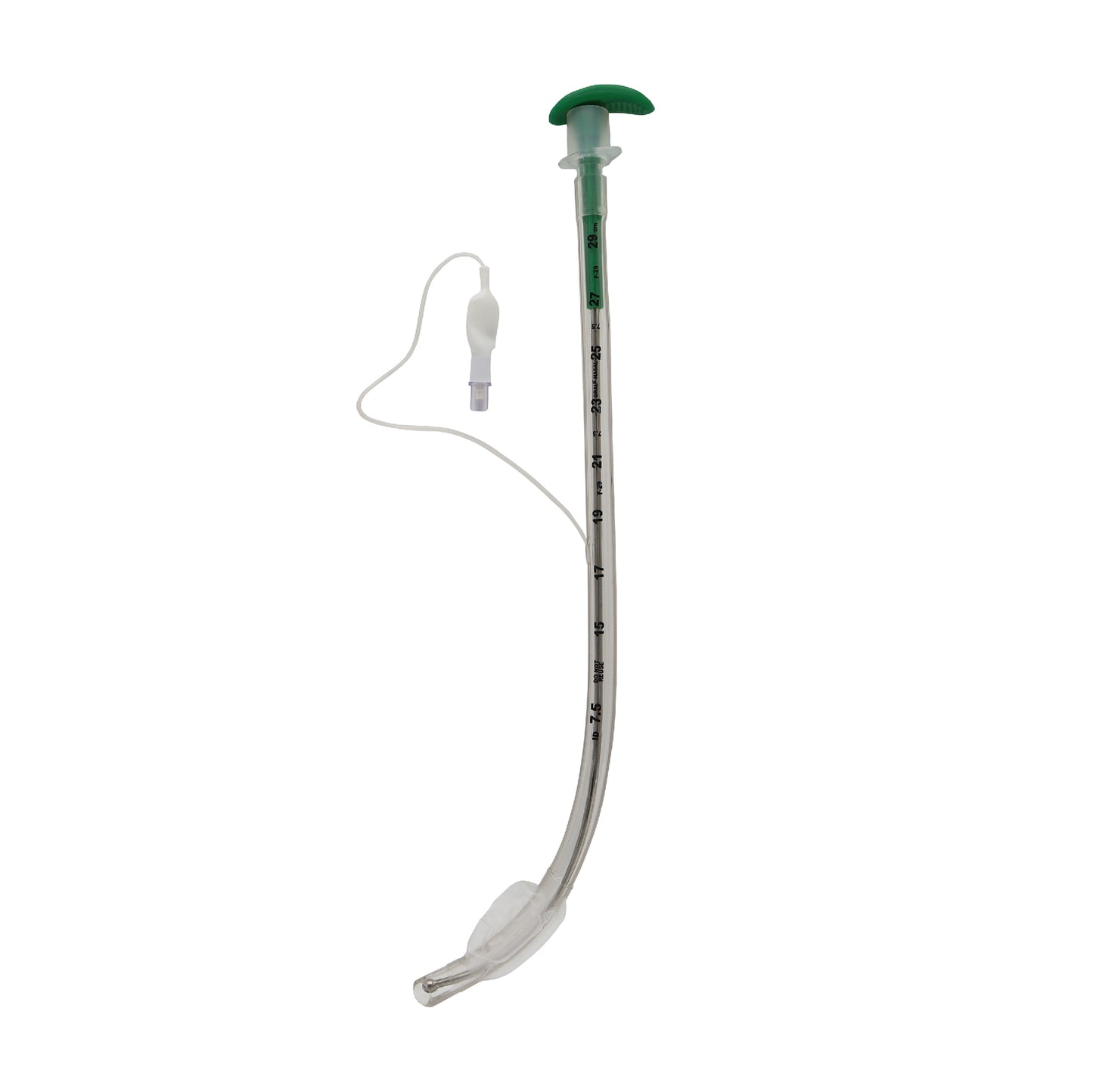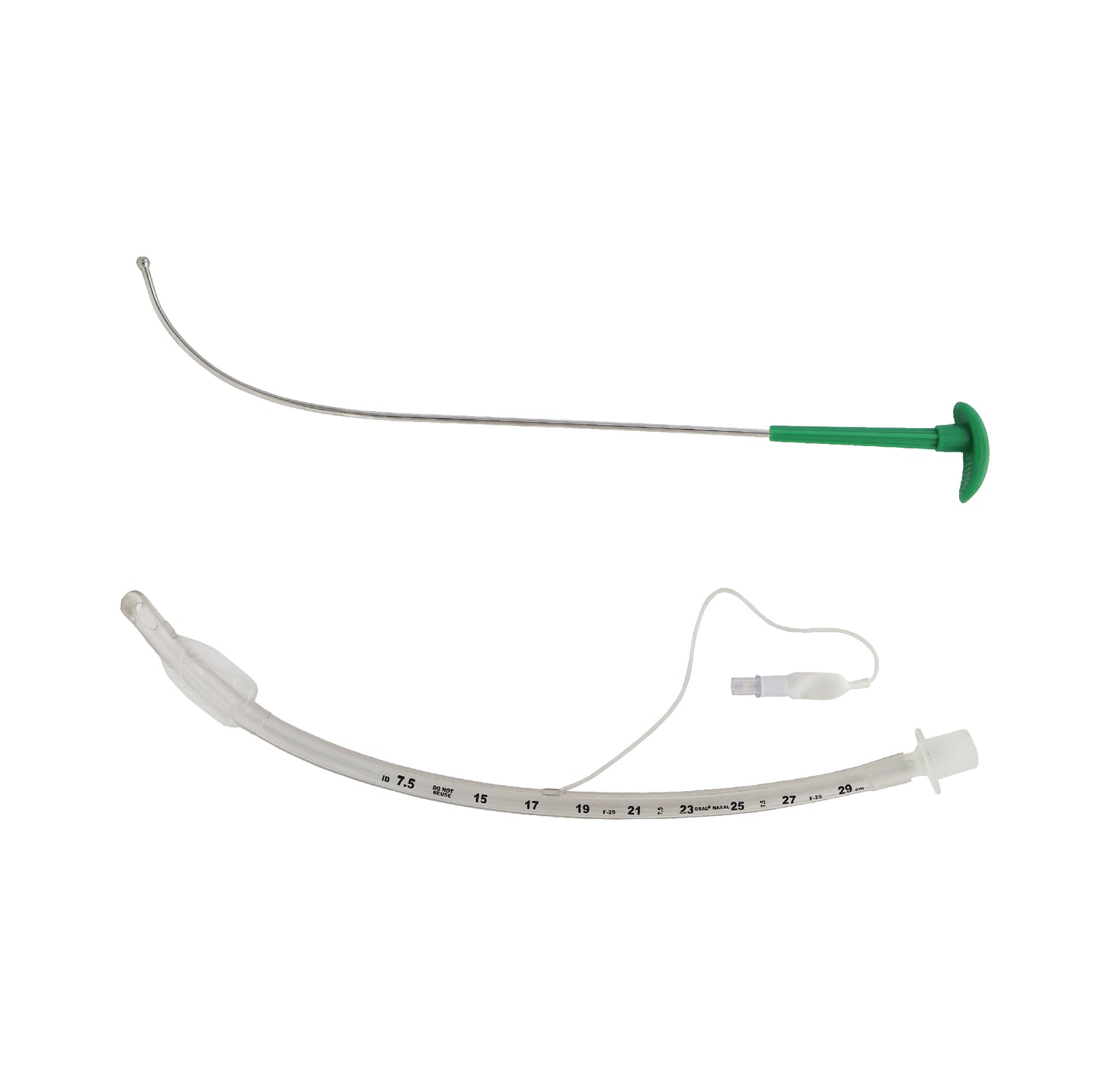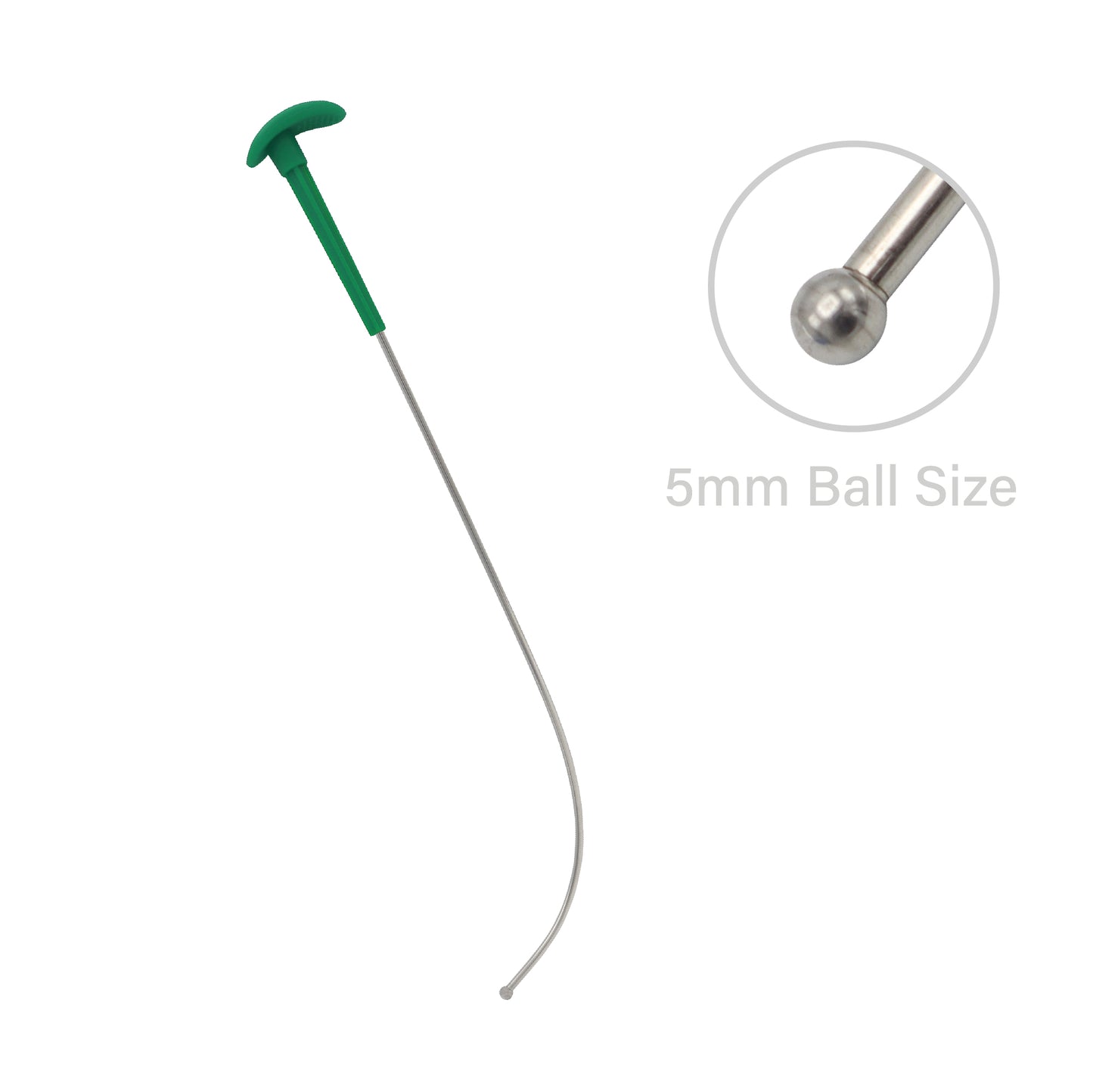Intubation Healthcare
Single Use Intubation Rigid Stylet – 25 Pcs Pack
Single Use Intubation Rigid Stylet – 25 Pcs Pack
Couldn't load pickup availability
Single Use Intubation Stylet - Intubation Healthcare
Our Single Use Intubation Stylet is designed for safe and efficient intubation procedures. With a user-friendly design and high-quality materials, this stylet ensures optimal performance during airway management.
Instructions for Use:
- Load the ET Tube: Carefully load the endotracheal tube (ET tube) onto the stylet, ensuring the distal end of the stylet does not extend beyond the end of the ET tube.
- Position the ET Tube: Position the ET tube at the opening of the vocal cords, ensuring not to advance the stylet past the vocal cords.
- Engage the Glottic Openings: When the ET tube is engaged in the glottic openings, extract the stylet by 5 cm using the thumb to push up on the thumb tab. This partial removal softens the tip of the ET tube, allowing it to pass through the vocal cords more easily.
- Final Positioning: Position the ET tube as per standard practice.
- Remove the Stylet: Carefully remove the stylet from the ET tube.
Specifications:
- Overall Length: 360 mm (14.17″)
- Working Length: 266 mm (10.47″)
- Ball Size: 5 mm
- Box Contains: 25 pcs
Materials: The stylet features a durable plastic composite handle (thumb tab and ET tube connector) and a stainless steel stylet rod, ensuring reliability and ease of use.
Our Single Use Intubation Stylet is a vital tool for healthcare professionals, ensuring smooth and effective intubation for patients while minimizing the risk of cross-contamination.
Intubation equipment is a disposable medical device used during endotracheal intubation procedures. It is designed to assist in the placement of an endotracheal tube into a patient’s airway.
An intubation stylet is a flexible, wire-like device that can be inserted into an endotracheal tube to give it shape and rigidity. It helps guide the tube through the vocal cords and into the trachea, ensuring proper placement and minimizing trauma to the patient’s airway.
Share








